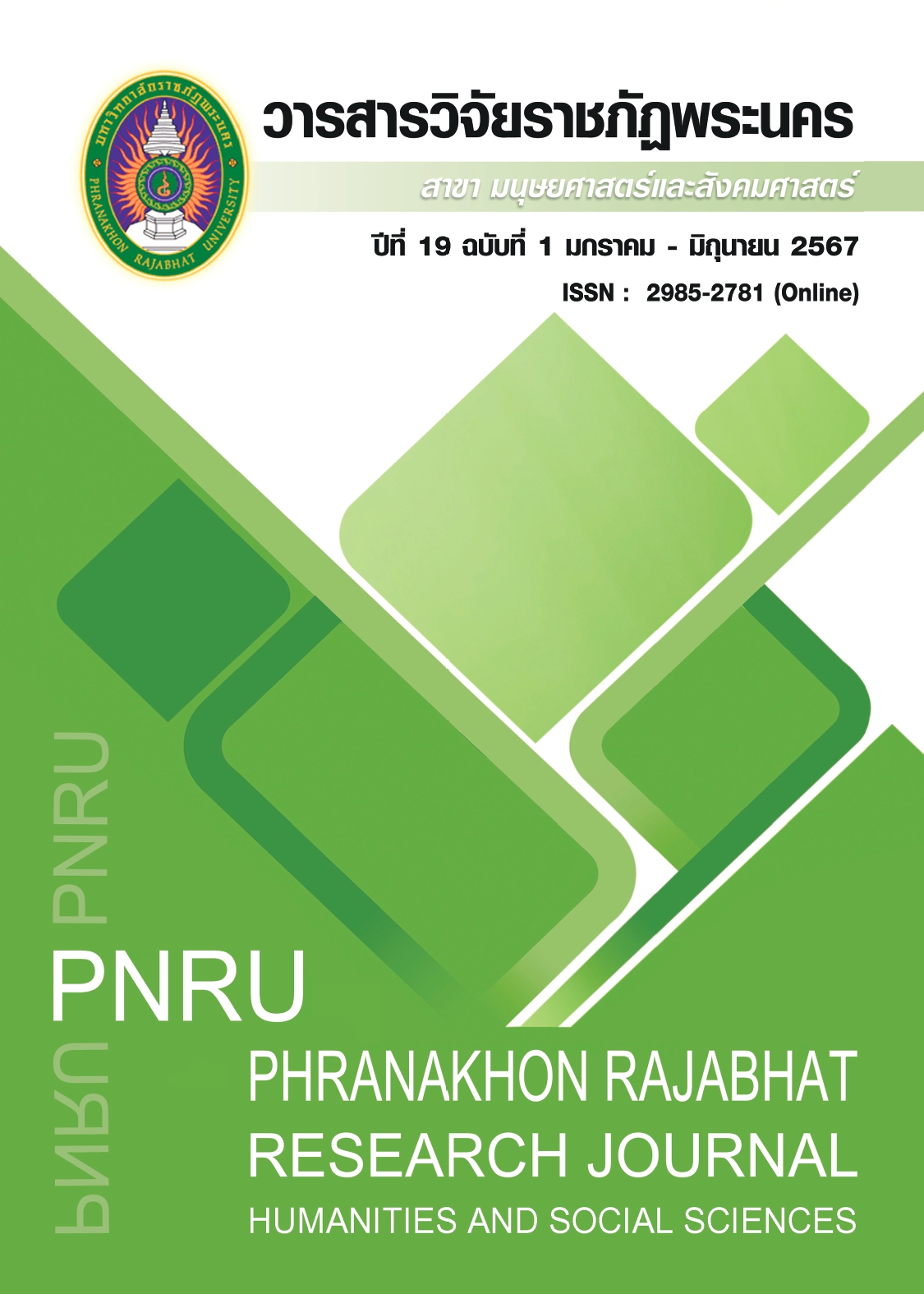ระบำตารีดูหยง
Main Article Content
บทคัดย่อ
การงานวิจัยสร้างสรรค์ครั้งนี้ มีวัตถุประสงค์เพื่อสร้างสรรค์การแสดงชุด ระบำตารีดูหยง เป็นการวิจัยสร้างสรรค์เชิงคุณภาพ มีเครื่องมือที่ใช้ในการเก็บรวบรวมข้อมูลได้แก่ แบบสังเกต แบบสัมภาษณ์ การสนทนากลุ่ม การวิพากย์จากผู้ทรงคุณวุฒิ และเสนอผลการวิจัยสร้างสรรค์แบบ พรรณนาวิเคราะห์ พะยูนฝูงสุดท้ายซึ่งเป็นสัตว์เลี้ยงลูกด้วยนมที่ใกล้สูญพันธ์อาศัยอยู่บริเวณรอบ ๆ เกาะลิบง อำเภอกันตัง จังหวัดตรัง มีจำนวนลดลงจนใกล้สูญพันธุ์เพราะทะเลที่อยู่อาศัยของพะยูนเกิดเสื่อมโทรมของระบบนิเวศใต้ท้องทะเล การประมงและการไล่ล่าของมนุษย์ที่มีความคิดว่าพะยูนเป็นสัตว์นำโชคเป็นสิ่งศักดิ์สิทธิ์ พะยูนจึงกลายเป็นสัตว์น้ำที่มีความสำคัญและเป็นที่ต้องการของตลาดอย่างมาก
การสร้างสรรค์การแสดงชุดระบำตารีดูหยง พบว่า ผู้ที่ได้รับชมการแสดงชุดนี้ตระหนักถึงความสำคัญของพะยูนและร่วมกันอนุรักษ์พะยูนให้คงอยู่สืบไป พบองค์ประกอบการแสดงดังนี้
1) การกำหนดชื่อชุดการแสดงจากภาษาท้องถิ่นของชาวบ้านให้ชื่อว่า ระบำตารีดูหยง 2) ดนตรี ศึกษาทำนองเพลงพื้นบ้านภาคใต้ตอนล่างแล้วนำมาประพันธ์เพลงใหม่ให้ชื่อว่าเพลงระบำตารีดูหยง 3) ท่ารำ สร้างสรรค์จากพฤติกรรมของพะยูนในอริยะบทต่าง ๆ 20 ท่า 4) เครื่องแต่งกายมีแนวคิดมาจากการเลียนแบบพะยูน ในส่วนของกระโปรงและสีของชุด ตัวเสื้อได้มาจากเสื้อบานง คอเสื้อได้จากเสื้อบะบ๋าและต่อแขนให้บานออก 5) การแต่งหน้าจะเน้นการแต่งแบบสวยงาม การทำผมรวบผมตึงมวยต่ำ สวมกระบังหน้า ด้านบนศีรษะติดตั้งตัวพะยูนขนาดเล็ก 6) การคัดเลือกผู้แสดงนั้นใช้เป็นผู้หญิงล้วน มีส่วนสูงเท่ากัน
Article Details

อนุญาตภายใต้เงื่อนไข Creative Commons Attribution-NonCommercial-NoDerivatives 4.0 International License.
บทความที่ได้รับการตีพิมพ์เป็นลิขสิทธิ์ของมหาวิทยาลัยราชภัฏพระนคร
ข้อความที่ปรากฏในบทความแต่ละเรื่องในวารสารวิจัยราชภัฏพระนครเล่มนี้เป็นความคิดเห็นส่วนตัวของผู้เขียนแต่ละท่านไม่เกี่ยวข้องกับมหาวิทยาลัยราชภัฏพระนคร และคณาจารย์ท่านอื่นๆในมหาวิทยาลัยฯ แต่อย่างใด ความรับผิดชอบองค์ประกอบทั้งหมดของบทความแต่ละเรื่องเป็นของผู้เขียนแต่ละท่าน หากมีความผิดพลาดใดๆ ผู้เขียนแต่ละท่านจะรับผิดชอบบทความของตนเองแต่ผู้เดียว
เอกสารอ้างอิง
Adulyanukosol, K. (2008). Sea-Cow. Bangkok: Marine and Coastal Resources Research and Development Institute. (In Thai)
Kettes, B. (1993). Lae Lod Wannakham. Bangkok: O.S. Printing House.
Roger, M. (1962). Diffusion of Innovation. New York: The Free Press.
Sai-hu, P. (1978). Beneficial Values and Harmful in Thai Society. Bangkok: TU Digital Collections. (In Thai)
Srisuwan, R. (2003). The Study of Creation of Southern Folk Dance.(Research report). Songkhla: Songkhla Rajabhat University. (In Thai)
Viroonrak, S. (2005). Dancing Arts in the Reign of King Rama the IX. Bangkok: Chulalongkorn University. (In Thai)


